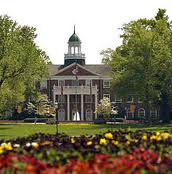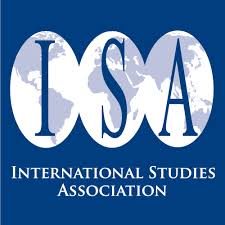The website e-IR asked me to review how mainstream media have represented radical Islamist media in the past decade, and what this means for the spread of radical discourses more broadly. Here is my reply, and you can read the original at e-IR here.
Mainstream media’s presentation of radical Islamic terrorism since 11 September 2001 is simply a continuation of how mainstream media have represented political violence for many decades. Moral panics about enemies within, journalists following agendas set by ministers, scandalised yet sensationalist coverage of violence, victims and perpetrators – all familiar from the post-9/11 period, but also thoroughly documented in the classic studies of media and violence in the 1970s and 80s. The focus on Islam has been hugely damaging for many people across a number of countries, but what is at stake is more fundamental. Modern societies have not found a way to manage the boundaries between their mainstreams and margins. In 20 years’ time, other groups will be demonised, journalists will continue to fail to explain why violence occurs, and many people trying to go about their daily lives will find themselves anxious, suspicious, and ill-informed.
Each society imagines its mainstream differently. Media are the condition for imagined communities, as Benedict Anderson put it, but also imagined enemies. Russia, Israel, France, Thailand – in any country we find journalists, artists, and political leaders routinely making representations of their own values and of groups that might threaten those values. The ‘war on terror’ label enabled a diverse range of states, each with their particular social antagonisms and historical enmities, to represent their struggles as part of an overarching conflict between themselves and radical Islam. They imagined their own community, and an international community, at war. Although some journalists challenged this, journalism as a general institution was a delivery mechanism for the very idea of a war on terror and for all its local manifestations. Reporters on newspapers, 24 rolling news and even ‘highbrow’ news analysis shows accepted the framing assumptions given by military and political leaders, and repeatedly and unthinkingly stitched together disparate attacks into one global narrative.
One of the most striking aspects of this decade was that the enemy became a visual presence as never before. ‘Radical Islam’ could be seen. Indeed, Islam itself became a spectacle for all around the world to gaze upon and think about, the historian Faisal Devji argues. Al-Qaeda took advantage of real-time 24 hour media to project violent events onto all our screens in sporadic but spectacular ways. At the same time, religious views returned to everyday political debate as religious leaders and communities used the internet and TV to promote and discuss their dialogues, concerns and beliefs. This increased visibility created difficulties for many ordinary Muslims, who on the one hand wanted to argue that Islam is one religion and Muslims a united body of people, but on the other complained when the resulting single image grouped together Al-Qaeda’s terrorist iconography with everyday multiculturalism in the West, the rich diversity of Muslim-majority countries, and the terrible suffering of Palestinians. The struggle for the image of Islam took place in large part through mainstream media; if a Muslim person appears in Western news, statistically there is a higher chance it is in a story about terrorism and criminality than if it was an individual of another ethnicity. Lone figures – the angry bearded man and the veiled woman – are the stereotypes media reporting has bequeathed us from the 2000s. While many herald the emergence of social media and the shift from mass communication to what Manuel Castells calls ‘mass self-communication’, it is likely that mainstream media will continue to be a chief venue for the struggle for Islam’s image in the next decade.
Ironically, despite the routine presence of Al-Qaeda in mainstream news, journalists have not always been willing or able to explain what or who Al-Qaeda is, or how it functions. Equally, the term ‘radicalisation’ only became a public term in the 2000s, but journalists have used the term as if its meaning is obvious without actually explained how radicalisation works. Admittedly, these two confusions both stem from the fact that security policymakers lack reliable knowledge about Al-Qaeda and radicalisation themselves, or at least won’t release full information to journalists. Meanwhile a ‘radicalisation industry’ of so-called experts has emerged, willing to speculate on air about radical Islamic terrorism (witness the first 24 hours after Anders Breivik’s killings in Norway this year).These people are rarely challenged by journalists.
As a consequence of these media failings, audiences are routinely presented with the image of an angry bearded man, possibly a clip from a video linked to Al-Qaeda, and then an unspecific warning of an imminent threat. Audiences are asked to be concerned, but not allowed to be informed.
What does this mean for the spread of radical and radicalising groups in the future? Three interlocking, structural tendencies must be considered. First, the state will continue to assimilate all non-state violence as a single threat to international order and the domestic social mainstream. “Violence must not be allowed to succeed”, remarked a British official in the 1970s. It is a simple, unchanging principle. In April 2011 in London, Patrick Mercer OBE, Conservative MP for Newark and member of the All-Party Parliamentary Group on Transatlantic and International Security, warned that the three security threats facing Britain are Al-Qaeda inspired terrorism, violence ‘attached’ to student protests, and ‘Irish terrorists’ attacking the royal wedding. Drawing a parallel between students and those engaged in terrorism suggests a failure to appreciate that vibrant democracy requires space for dissent and disagreement. From the point of view of the state, however, it is all actual or potential non-state violence. Meanwhile, the latest version of Prevent, the UK government’s counter-terrorism strategy, has switched attention from addressing violent extremism to simply ‘extremism’. Extremism is understood as divergence from ‘mainstream British values’, defined as ‘democracy, rule of law, equality of opportunity, freedom of speech and the rights of all men and women to live free from persecution of any kind’. Society is asked to imagine itself as a community bounded by shared values, but this necessarily puts some people on or outside that boundary. Even if they are not violent, they might one day consider violence, and violence must not be allowed to succeed.
Second, it is a challenge for journalists to observe how political leaders are re-drawing and redefining these boundaries, since they – as responsible, professional insiders – will be asked to categorise and condemn those deemed on the radical outside. News values endure. The drama, simplicity and immediacy of acts of political violence will keep terrorism and violent protest on the news agenda while allowing a new cast of radicals to come to the fore.
Finally, radical Islamic terrorists or any radical group will play cat-and-mouse with security agencies as they try to use digital media to mobilize potential recruits and supporters. This game will be largely invisible to ordinary people. Nevertheless, we will be asked to endorse cybersecurity policies and work within modified internet infrastructures without being given any systematic data on connections between radicalism, radicalisation and cybersecurity. Journalists will be no better informed, but will be obliged to report as if there are connections.
These intersecting pathologies might leave the reader pessimistic. Opportunities for change seem minimal. On an immediate level, it is a question of changing behaviours. Can security journalists bring a more informed manner of reporting to mainstream audiences? Will the state decide it has a stake in a more informed citizenry? Will citizens themselves bypass mainstream media to find alternative ways to be informed? On a more profound level, it is a question of finding new ways to conceive and manage the relationship between social mainstreams and margins. The implicit equivalence of margin with radical and radical with violence makes for perpetual insecurity. Finding a more mature approach, however, opens up fundamental questions about the state, society and individual which few have begun to ask. This is where the challenge lies.
—
 2.00–6.00 pm, 2 November, The Attlee Suite, Portcullis House, Westminster
2.00–6.00 pm, 2 November, The Attlee Suite, Portcullis House, Westminster


